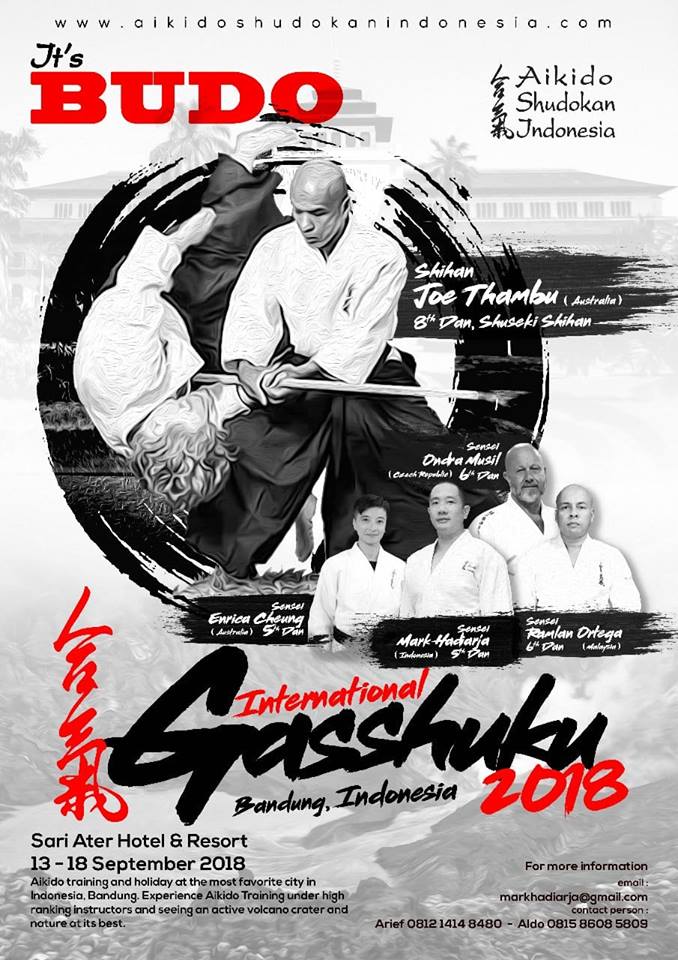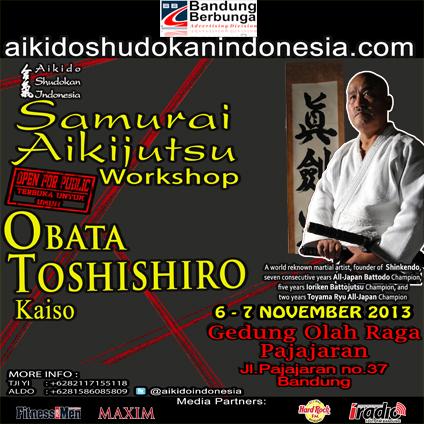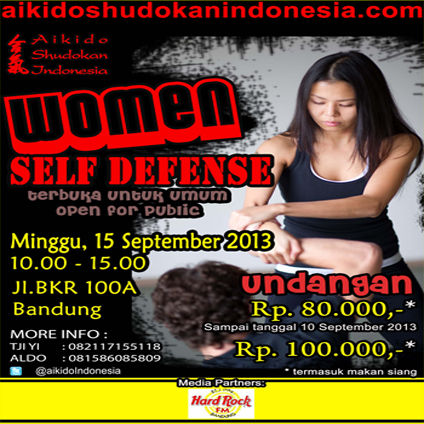By the time you
enter the dojo for the first time you will encounter new places and sounds
unusual. Rules
that you will apply during practice,
essentially based on common sense to ensure the safety and show reasonable respect
for fellow students. Finally,
you also will use the same rules in your
daily life.
Dojo Area Rules
- No
shoes or other footwear in the dojo. Store
shoes or other footwear on a shoe rack
as you enter the dojo.
-
No walking in the dojo by wearing
inappropriate clothing, eating, drinking, smoking, whistling or shouting.
-
May not distract or interfere with anyone who was practicing in the dojo.
- Maintain cleanliness
and tidiness in locker room.
-
Do not leave the locker room until you tie your belt neatly.
Rules on the mattress in Practicing Time
-
If you're using dogi (gi) and you on and off the mats for the first and last
time, you have to kneel in Seiza and bent to kamiza say "OSU". At
other times simply by standing and bowing to kamiza is enough.
-
You should be ready in the mats minimum
of ten minutes before practice begins.
-
At the time of the class you have to concentrate on the techniques which is
practiced. Receive
orders and instructions by saying "Osu!" and bowed to the instructor.
-
Move quickly and respond to all commands.
-
During the training should not approach, call the instructor to ask questions
or raise hands to attract the attention of the instructor.
- Do not
walk between two people who are facing.
-
Do not shout, swear, or a temper tantrum on the mat.
-
Do not lie on a mat or relax with a straightened leg.
- Respect
your partner. Learn
to control your movements to reduce injuries.
-
Do not lean against the wall.
-
At the end of class time, remain in Seiza position until the instructor ordered
the class to stand.
- Those who
came late had to get to the locker room. At
the time there on the mats bent to kamiza immediately, go to the instructor,
salute and say "OSU".
-
After training, all students must sweep and clean the mattress.
-If
you are late, do not interfere with the instructor if they were giving a
demonstration or commands. Wait
at the edge of the mat until the instructor to see to you. And do
not participate in exercises until the instructor bend to you.
-
If you arrive when the class has begun
(eg, marching, being ready to bend), you must wait until the salute process end
and then you can go join the exercise.
Health and Hygiene
-
All open wounds should be covered during the training (you have to close the
wound itself).
-
Clean the blood (if any) of your dogi and mattress immediately.
- Nail of the legs and
arms should be short and clean.
-
Do not wear jewelry or other accessories. You must wear a clean dogi every
time.
General matters
-
Exercise fee have to be paid dues on time because of this that makes the dojo
to run smoothly.
-
You must bring your membership card to show it every practice.
Rules When Practicing
- Warm up
should always be done before starting training. Warm up is very
important to prevent muscle injury.
-
Three minutes before the class begins, students must sit side by side in
accordance with their respective ranking. You
must ensure that the right of your friends is equal or higher rank. Use
this time to remove the problems or the stress of our minds and prepare us
(mentally) to practice.
-
If you practice in private, whether due to a lack of expertise, to improve
stamina, foundations, etc., must be done before or after training.
-
At the time of exercising, you need to train seriously and additional training
can be done before or after training.
-
Dojo will be open minimum of half an
hour before practice and will remain open in accordance with your training
needs.
-
You can look for the seniors before and after practice because they would be
happy to assist you with problems or questions. It
is your right to ask and they are always there to help.
-
When all sit side by side, the instructor will go to the mat and sit in Seiza
facing kamiza (dais of honor at the front of the dojo). One
of the senior students who sat the far right will say "shomen ni rei"
and all will bow to salute. Then the
instructor will turn and face the students. Senior
student will say "Sensei ni rei" and students will then be bent to
salute and say "OSU".
-
Students will begin to exercise by doing basic movements by performing kihon
dosa. You
should consider carefully the basis of this movement because it is the essence
of Aikido movement. The
good basics would be a technique, because it would be a good aikido.
-
Usually the training will consist of two or three techniques in practice. One technique
would be done well if it is done continuously. Do
not just do the movements, but try to understand what you are doing and why. Each time
you perform a technique that will always differ slightly. Feel
what it can do and what not to do.
- There are two very
important when practicing. When
your partner tapped at the time the lock is on, you have to stop. Tapping
means that if the technique is passed there will be a serious injury. Another
important thing is the command "Yamae", which means it stops. When you heard the
word, you must stop. Injuries
will happen when the "uke" stops and "shite" keep doing the
technique.
-
Do not get frustrated or angry at yourself or your partner if a technique is
not successful. If
the techniques are simple, you do not need to practice to learn it. More
when you are just beginning, when everything is new and you try to move your
body and coordinate it in Aikido, many things will be weird. But
remember that if you get out of the dojo and learn something you did not know
before then it means there is progress.
-
If you only get one thing out of every training session, whether it's just a
hand movement in the basic level or a new technique, practice it after 20 times
you will get 20 new things.
- More often you
practice, it is better for you. If
you need inspiration, look at the senior students who train with you. They
also have the first three months, but two years or twenty-five years before and
that's what you get when you train hard.
-
At the time the training is over, you will be dealing with a partner lined up
in a stance (kamae) where you will proceed with the motion "Shumatsu dosa
1 & 2". After
completing Shumatsu dosa, you wait in kamae position, facing your partner until
you are asked to complete a kamae (kamae no re) and turned to fix your gi.
-
The training will end in a manner similar to the start time. Instructors
will face kamiza and senior students will say shomen ni rei and everyone will
bow to salute. Then
the instructor will turn and senior students will say "Sensei ni
rei". All
will bow to salute and say "OSU".
-
Wait until the instructor gives respect and out of the mattress. At
this time you have the opportunity to say thank you on your training partner.
-
Then you have to clean the mattress and you should always remember that if the
training is over, that does not mean you can exchange clothes, then go home. You
can always asking for things that are less understood.
Popular News
Dojo Rules
Jumat, 10 Februari 2012 - 14:36:33 WIB
Contact
-
Sensei Mark Hadiarja
Address:
Jl. Pelajar Pejuang 45 No. 19 Bandung
Jawa Barat, Indonesia
Contact:
Mobile : +62 812-2012-333
Sensei Arief
Mobile : +62 812-1414-8480Video
-
Visitor
-

Online : 2 Users 
Today : 
This Week : 
this month : 
this year : 
Total Visitor : Ip Address : 3.139.104.214
-
-


















resize.jpg)
 resize.jpg)